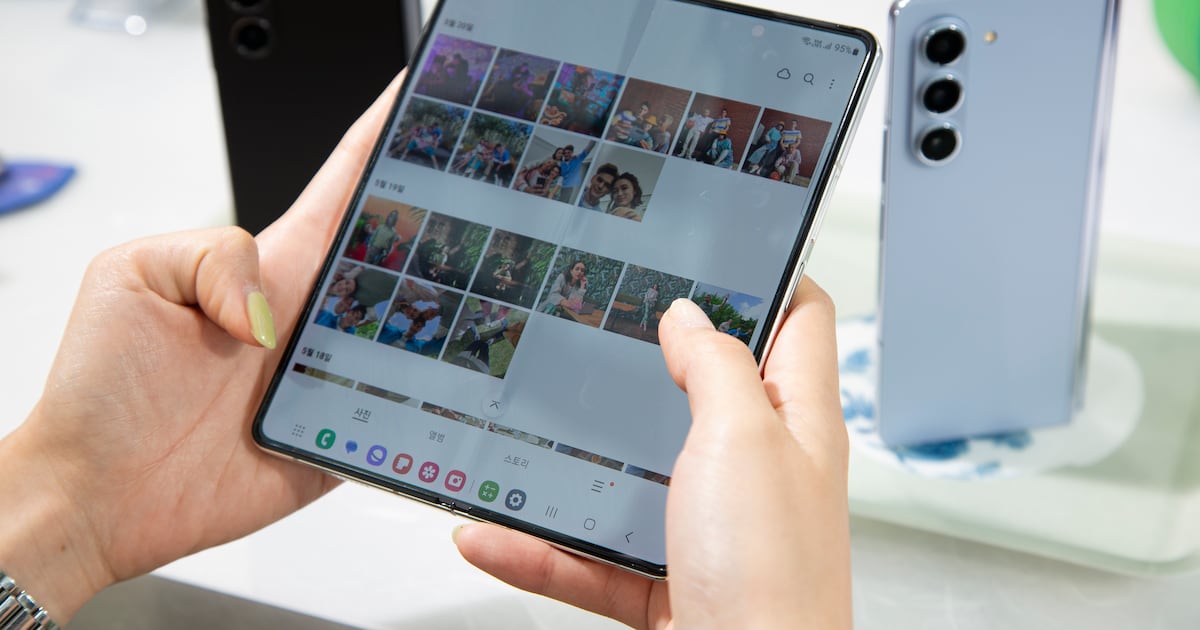Samsung will unveil its new generation of foldables this week – but high prices are the main obstacle keeping them out of consumers’ hands.
The world’s largest mobile phone maker will also have to try to regain the leadership in the foldable device market, which it lost for the first time in the first quarter of this year.
Seoul-based Samsung will unveil what is expected to be the Galaxy Z Fold6 and Flip6 at its second Unpacked 2024 event in Paris on Wednesday. The company has not officially confirmed the names of the devices.
Improvements to both smartphones, according to multiple leaks and reports, include a flat-edge design similar to the recent Galaxy S24 series, improved cameras, and a more powerful Galaxy AI platform that was first featured on the S24 devices. A built-in S-Pen is not expected on the Fold6.
However, despite the token and necessary upgrades to foldable devices, their cost remains the biggest obstacle for consumers considering the switch to the still-niche form factor, hampering the sector’s market growth, analysts said.
Foldables remain more expensive than regular smartphones, mainly due to their more complex construction. The Galaxy Fold, in particular, has started at $1,799 for the past two years, with Huawei’s device even more expensive.
That’s compared to $1,299 for Samsung’s last premium device, the Galaxy S24 Ultra, and $1,199 for the iPhone 15 Pro Max. The Flip, meanwhile, presents a more affordable option at $999, on par with entry-level devices from Samsung and Apple’s latest lineups.
“Although foldable hardware is constantly evolving … the market has not grown as expected,” said Aaron West, senior smartphone analyst at industry data tracker Omdia. The national.
“High consumer costs remain a key barrier to more foldable market entry. All new versions of foldable phones need to address both this cost and the lack of use cases to make foldables more attractive to consumers.”
In addition, users note improvements including dust and water resistance, more complex hinges, screen durability, battery life, camera technology, software support, and devices becoming lighter and thinner.
“Continuous improvements … show that foldable devices are becoming a serious category,” said Akash Balachandran, research manager for mobile devices at International Data Corporation. The national.
“Foldable smartphones tend to fall into the premium and ultra-premium categories, which limit range and appeal. However, as ASP [average selling prices] in the fall we can expect a significant increase in sales, especially in the flip form factor, where prices are already falling.
Samsung is losing its ‘foldable’ crown
Foldable smartphones remain a minor category in the overall smartphone market, but manufacturers are constantly pushing to bring more to the market as consumer preferences change.
Their popularity is largely due to Samsung pushing the category into the mainstream, starting with the original Galaxy Z Fold in 2019. The company followed it up with the Galaxy Z Flip the following year, a smaller but more affordable phone in the bid to attract more users.
Since then, Samsung has dominated the foldable category with a market share that peaked at over 80 percent about two years ago.
However, a big change happened in the first quarter of 2024: Huawei now has the largest market share in foldable devices, capturing about 35 percent of the market, displacing Samsung, which had 23 percent, which is significantly less than 58 percent previously year, a May report from Counterpoint Research shows.
Bullish forecasts
Although industry reports on the future of the foldable smartphone sector agree that growth will continue, projected numbers vary.
Overall, shipments of the global foldable smartphone market are expected to reach 25 million units in 2024, up about 38 percent from 18.1 million last year, and will further grow to 45.7 million by 2028. at a compound annual growth rate of 20.3 percent, IDC data show.
Samsung also has to contend with other notable brands that have their own foldable devices, including Oppo, Motorola, Google and Honor, the former sub-brand of Huawei, which ranked third in the three months to March, according to data from the Hong Kong-based Counterpoint.
Huawei’s growth stems mainly from its home territory of China, which is the preferred choice for consumers in the world’s second-largest economy, Mr West said – despite the lack of Google services.
“Outside of China, Samsung’s biggest competitors are Honor for its ultra-thin book-style foldable phones and Motorola for its more affordable Razr series of flip-style foldable phones,” he said.
Meanwhile, a separate report from TrendForce in June predicted that Samsung’s market share would account for more than half of the market and maintain the lead in 2024, with Huawei in second place with around 31 percent share.

They will make up the upper tier of the race this year, where shipments are expected to reach 17.8 million units, the Taipei-based research firm said.
This will make up just 1.5 percent of the total smartphone market – but is expected to grow to around 5 percent by 2028, it added.
“It’s only a matter of time before consumers no longer see a big trade-off in choosing a foldable – but prices should come down,” Mr Balachandran said.
Updated: July 8, 2024, 8:55 am



